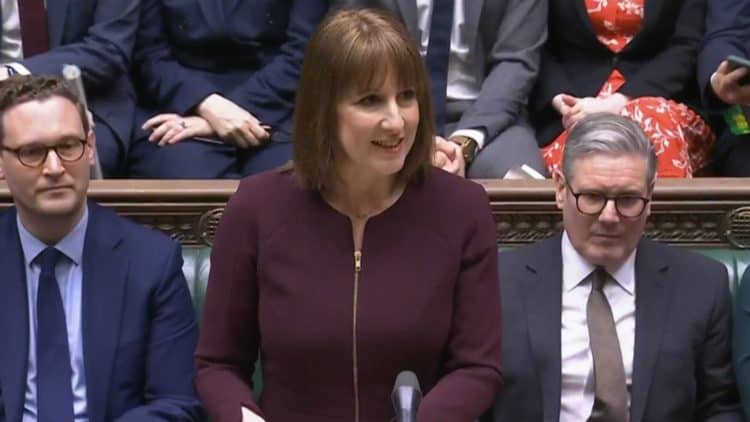Rachel Reeves just delivered her first spring statement as chancellor, and there’s a lot to unpack. No tax hikes (for now), deep welfare cuts, and cautious optimism about growth. But what does it all mean for your finances? Let’s break it down.
💬 Reeves sets the tone: ‘A decade of renewal’
Rachel Reeves kicked off by reminding everyone why Labour was elected: to bring change, provide stability, and “deliver a decade of national renewal.”
She pointed out that the Bank of England has cut interest rates three times since Labour took office. However, growth has stalled, tax revenues are lower than expected, and global uncertainty (thanks, Trump) has pushed up borrowing costs.
Translation? The economy’s in better shape than under the Tories, but it’s still a bumpy road ahead.
📉 Growth: A mixed bag
The Office for Budget Responsibility (OBR) has downgraded its 2025 growth forecast from 2% to 1%. Not great. But it’s slightly more optimistic for the following years, predicting steady growth between 1.7% and 1.9% until 2029.
Meanwhile, real household incomes will rise at double the rate expected last autumn. The OBR claims people will be £500 a year better off compared to the Conservatives’ last budget. But will you feel it in your wallet? That’s another question.
💰 No new taxes (but HMRC is coming for tax dodgers)
No fresh tax hikes this time – despite Tory claims that an “emergency budget” was coming. However, Reeves is cracking down on tax avoidance. New tech will help HMRC recover an extra £1bn, bringing the total tax haul to £7.5bn.
So, while your taxes aren’t going up, don’t expect any easy loopholes either.
⚖️ Welfare cuts: Over 3 million hit
Here’s where things get tough. Reeves is sticking to her “Labour is the party of work” message – and that means major welfare reform.
- The universal credit health element will be cut for new claimants and then frozen.
- Personal independence payments (PIP) are under review – and not in a good way.
- £1bn will be spent on employment support, with £400m going to jobcentres.
The OBR estimates these cuts will save £4.8bn. But the human cost? More than 3 million people will lose out, with families facing an average loss of £1,720 per year. Some disabled people will lose up to £4,500 annually.
Labour MPs and charities are already calling this a betrayal. Could this become a major political headache for Reeves and Starmer? Watch this space.
🛠️ Spending: More for defence, less for civil service
Labour is sticking to its commitment to boost defence spending to 2.5% of GDP, partly funded by cuts elsewhere.
- NHS England will be scrapped, with savings redirected to frontline patient care.
- Civil service costs will be cut by 15%, saving £2bn.
- A new £3.25bn transformation fund will invest in AI to make public services more “efficient.”
Day-to-day government spending will rise above inflation, but it’s heavily front-loaded. Cuts could come later down the line.
📈 Inflation and growth: A long road ahead
Inflation is falling – good news. The OBR predicts it will average 3.2% this year before dropping to the Bank of England’s 2% target by 2027.
But Reeves isn’t satisfied. She’s banking on infrastructure projects like Heathrow’s third runway and planning reforms to drive long-term growth.
Will it work? Maybe. But for voters expecting quick fixes, this might not be the most exciting news.
🔫 Defence: Labour wants the UK to be a ‘defence-industrial superpower’
With global tensions rising, Reeves is throwing money at defence.
- £2.2bn extra for the Ministry of Defence next year.
- 10% of the MoD’s equipment budget will go to tech like drones and AI.
- £400m for defence innovation, plus more cash for nuclear submarine jobs in Barrow.
Reeves wants the UK to be a “defence-industrial superpower”, making defence a key driver of economic growth.
🏗️ Planning and housing: Growth, but not overnight
Reeves’s planning reforms could boost GDP by £6.8bn by 2029 – the biggest predicted economic uplift for a policy that doesn’t cost taxpayers a penny.
Housebuilding is expected to hit a 40-year high, reaching 305,000 homes a year. That’s 1.3 million homes over five years, close to Labour’s manifesto promise.
More homes = lower prices and more jobs. But will these houses actually get built? That’s the real test.
🏁 Final thoughts: Will it work?
Reeves ended her speech with a clear message: change won’t happen overnight, but stability has returned.
That’s fine for now. But with benefit cuts hitting millions, growth still sluggish, and spending trade-offs on the table, Labour will need to prove that “stability” means more than just balancing the books.
Voters have heard plenty of promises before – now, they’ll be watching to see if Labour can deliver.
You may also like: Clive Lewis tears into Labour over welfare cuts: ‘punching down on the poorest’







